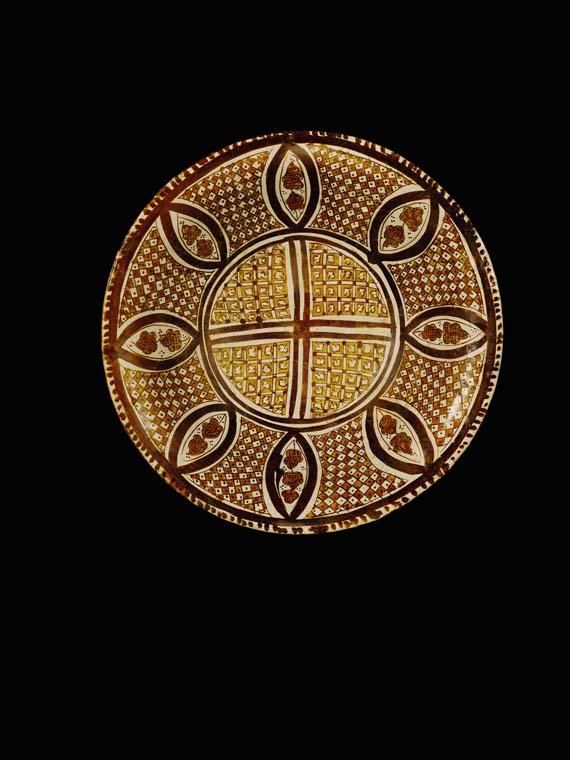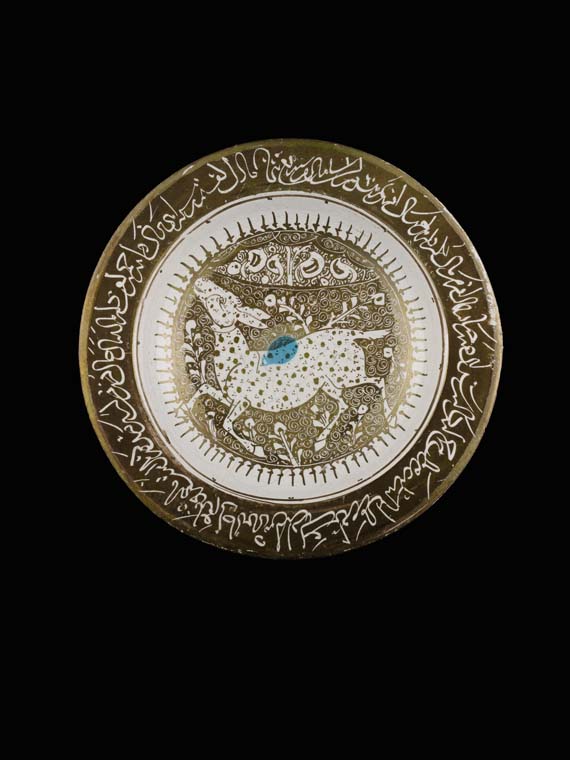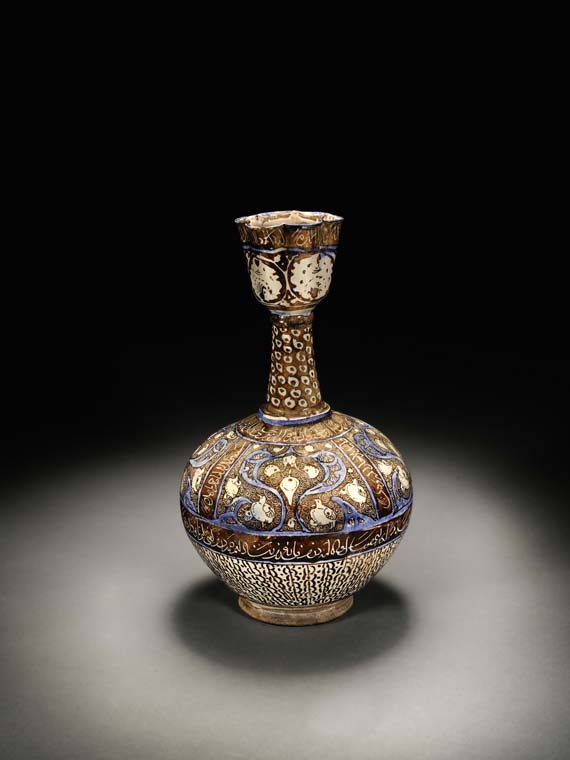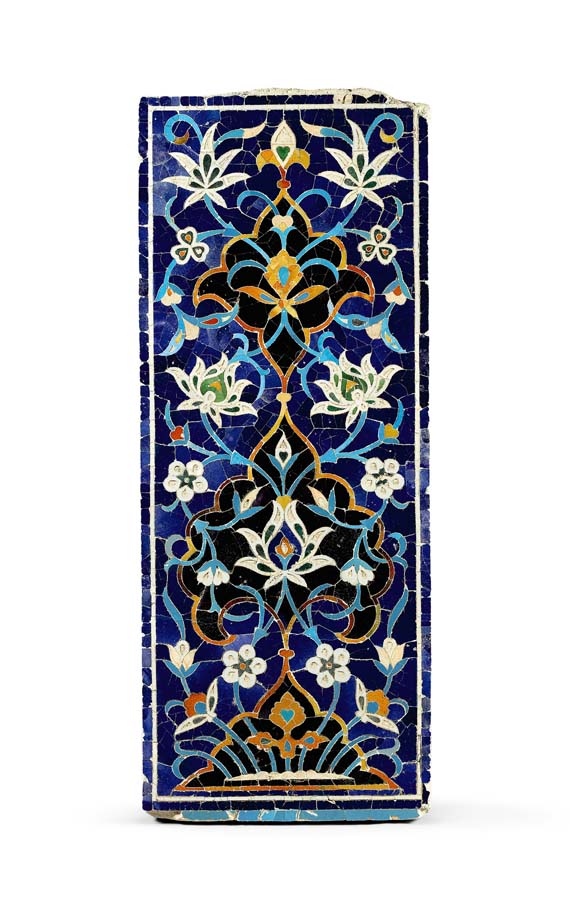Sotheby’s Arts of the Islamic World Evening Sale
Sep 05, 2011 Art Collection
The Evening auction, which also includes an assemblage of 17 rare and highly important works of Islamic Art sourced from collections across the globe, will take place on Tuesday, October 4, 2011 and carries a combined estimate of £9-13 million.
The Arts of the Islamic World Day Sale will take place on Wednesday, October 5, 2011 and is expected to realise in excess of £9 million.
Commenting on the market and the Arts of the Islamic World Evening Auction, Edward Gibbs, Senior Director and Head of Sotheby’s Middle East Department, said: “The demand for works of art relating to the field of Islamic Art has never been so strong and is growing rapidly, demonstrated by the record-breaking prices and auction totals achieved at Sotheby’s in April for rare and important pieces with outstanding provenance. To bring to market this autumn the truly exceptional collection of Islamic Ceramics assembled by Harvey B. Plotnick is therefore a tremendous privilege for Sotheby’s. Part One of this collection of outstanding masterpieces of Muslim craftsmanship from across the Islamic world will afford collectors and connoisseurs an unrivalled opportunity to acquire some of the rarest and most important ceramics relating to the Islamic World ever to be offered at auction.â€
This extraordinary selection of ceramics from the Harvey B. Plotnick Collection focuses principally on the cultures of Iraq and Iran, as well as the trade routes between the Mediterranean and Central Asia, and was assembled over the past 20 years. Harvey B. Plotnick’s interest in Islamic Art stems from a trip to Paris in 1992 with his wife, Elizabeth, to celebrate their wedding anniversary. They spotted elegant 9th/10th century Central Asian bowls in a shop window, which inspired Plotnick to educate himself about his new passion. His first purchase was a Kashan lustreware bowl that Daniel Walker, Head of the Islamic Art department at the Metropolitan Museum of Art in New York, at the time, had been considering as a possible acquisition for the Met. Although Mr. Plotnick purchased most pieces one at a time, his acquisition of two major collections represents a significant portion (nearly a third) of the collection that he assembled.
Discussing his collecting in the introduction to Perpetual Glory: Medieval Islamic Ceramics from the Harvey B. Plotnick Collection, collector and connoisseur Harvey B. Plotnick, said: “My style of collecting is first to steep myself in the subject at hand; only later do I begin acquiring. I set about educating myself on the subject of my new passion, for this is one of the greatest joys of collecting: exposing oneself to new worlds of learning, not only about the objects themselves but also about their context, the places and periods in which the works originated.†Commenting on building this particular collection, Mr. Plotnick wrote: “I began by purchasing books, in and out of print; first those devoted to Islamic ceramics, and, later, works pertaining more broadly to Islamic art.â€
Sotheby’s will offer for sale the Harvey B. Plotnick collection in three parts over two years in London:
• Part One in October 2011;
• Part Two in April 2012; and
• Part Three in October 2012.
Part One of 27 pieces from the collection is estimated at £2.6-3.6 million and will be highlighted by a large 9th century Abbasid lustre bowl with geometric and stylised vegetal decoration from Iraq. This magnificent bowl represents one of the earliest attempts at lustre painting on ceramic, a radical new technique that involved the application of metallic pigments to the surface of a pre-fired glaze to give the appearance of glittering gold. The earliest polychrome lustres are by far the rarest and the most sought-after by collectors.

9th century Abbasid lustre bowl with geometric and stylised vegetal decoration from Iraq. Photo courtesy of Sotheby’s
Est. £250,000-350,000
A further Abbasid highlight of the collection is a 9th century pottery bowl with a Kufic inscription from Iraq (see bellow). An exceptional example of early Islamic tin-glazed pottery, it epitomises the powerful abstraction of the early Abbasid style. While the shape imitates a Chinese prototype, the use of cobalt blue is a novel departure that was to have a profound and long-lasting influence on world ceramics.

A 9th century Abbasid Pottery Bowl with Kufic Inscription, Iraq. Photo courtesy of Sotheby’s
Est. £150,000-200,000
Illustrated at the heading of this entry is an early 13th century Kashan lustre pottery bottle vase from Persia with inscriptions in Arabic and a Kashan dish depicting an onager or wild donkey, native to the deserts of Iran. The inscriptions include a date of AH609/AD1212-13.

Photo above: 13th century Kashan lustre pottery bottle vase from Persia with inscriptions in Arabic. Photo courtesy of Sotheby’s
Est. £150,000-200,000

Kashan dish depicting an onager or wild donkey, native to the deserts of Iran. The inscriptions include a date of AH609/AD1212-13. Photo courtesy of Sotheby’s
Est. £150,000-200,000
Among the most beautiful objects is a striking and monumental 15th century Timurid mosaic tile with lotus blossoms, from Transoxiana, illustrated below.

15th Century Timurid mosaic tile with lotus blossoms, Transoxiana. Photo courtesy of Sotheby’s
Est. £250,000-350,000.
Sotheby’s
http://www.sothebys.com/en.html
Comments
Add a comment